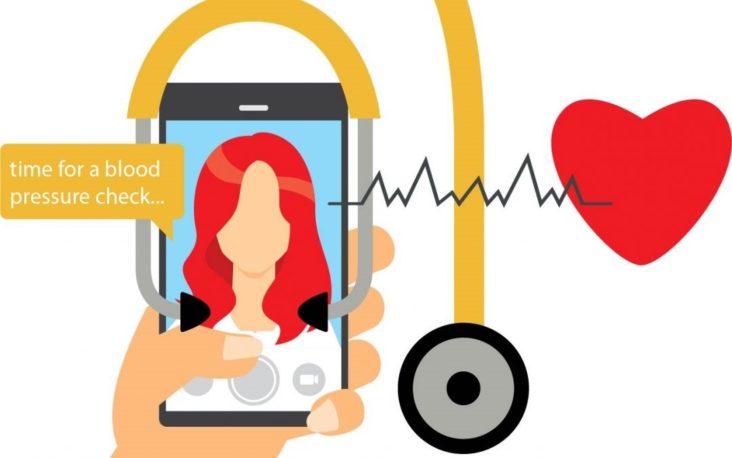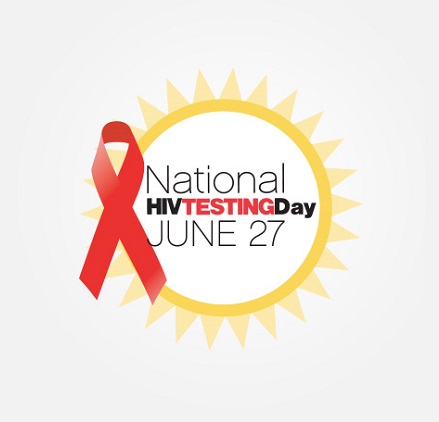Click on the link below to see the story Womens Telehealth founders Tanya Mack and C. Anne Patterson, M.D. co-wrote on COVID-19 and Pregnancy beginning on Page 32.
Click on the link below to see the story Womens Telehealth founders Tanya Mack and C. Anne Patterson, M.D. co-wrote on COVID-19 and Pregnancy beginning on Page 32.
Listen to the interview with Women’s Telehealth President Tanya Mack as she was a guest on the podcast “Really Know Your Customer”. Click the link below to hear how telemedicine has taken the medical field by storm.

By Tanya Mack, Women’s Telehealth
On March 11th, the World Health Organization declared COVID-19 a worldwide pandemic. As our understanding of COVID-19 expands and our social distancing and separation requirements extend, the need for safe access to care for all, and the protection of pregnant women has become critical. Although we do not yet know if pregnant women have an increased chance of getting sick from COVID-19 compared to the general public, we do know there are changes in their bodies that may increase the risk of infection. We are now seeing indiscriminate and sustained spread across patients in all three trimesters. Within the past month, telehealth has risen to the forefront worldwide as a means to provide quick and safe access to medical care – and the pregnant patient and their obstetric providers are no exception.
Telehealth Enters OB Practice in a Widespread Way
Prior to the COVID-19 pandemic, the use of telehealth was minimal in obstetric practice in the US. Despite its growth in other healthcare areas, few healthcare facilities or providers were set up to provide OB telehealth services. However, in the short span of 4-6 weeks, this has changed dramatically. We have seen ACOG and the Society for Maternal Fetal Medicine (SMFM), hospitals and OB practices quickly respond with broad adoption of telehealth as a means to protect pregnant patients from viral exposure, OB clinical protocols adjusted for telehealth and “pods” of providers during delivery admissions to avoid cross-contamination. As we are learning together, telehealth use can be crucial in meeting healthcare needs during disaster relief.
How Telehealth Works in General and in Obstetrics
Telehealth can be used in many settings such as hospitals, outpatient clinics, doctor’s offices and in patients’ individual homes. Telehealth visits can occur by using satellite, cellular or broadband transmission. Prior to COVID-19, in the US, broadband (internet) was the most common method of transmission. However, cellular transmission is quickly providing access, as it is the most available means for the patient to connect from home via their Smartphone. Clinical standards follow the same guidelines and flow as face-to-face visits. Generally, the connection requirements include: a camera, a microphone and either a cellular or internet connection between the parties.
OB Telehealth visits can occur in the following ways:
Regulatory and Reimbursement Changes in Telehealth During COVID-19 Crisis
Reacting to and being flexible with the current situation, the federal government has greatly relaxed prior barriers to telehealth in recent weeks. Although few pregnant patients have Medicare as a payor, the Centers for Medicare and Medicaid Services (CMS) has set standards that many state Medicaid and commercial carriers are following as well. Some of these temporarily “relaxed” guidelines for telehealth use and payment during this crisis are:
For reimbursement, although CMS and Medicare have lifted restrictions for payment nationwide and temporarily, each state controls their Medicaid coverage and each commercial healthcare payer determines their telehealth coverage. Patients are encouraged to follow and check with their own carrier and state, but an overwhelming majority are covering telehealth during this public health emergency. In general, although the use of telehealth and reimbursement for it are changing daily, preventing the spread of COVID-19 in pregnant patients remains the #1 priority in obstetrics.
Obstetric Protocol Adjustments for Low and High-Risk OB Patients Using Telehealth
Obstetric professional organizations such as delivering hospitals, ACOG and SMFM are adapting clinical guidelines for telehealth. The idea is to have OB patients come in for critical antenatal appointments such as the 11-13 weeks dating scan and labs, 20-week anatomy ultrasound, and the 26-18 week GTT testing and end of pregnancy visits. Telehealth antenatal visits can be used for <11 weeks initial assessment visits, blood pressure checks for pre-eclampsia and glucose monitoring for gestational diabetes, and kick counts/telehealth follow-up versus in-person nonstress tests (NSTs), etc.
As there is no vaccine for COVID-19 yet, limiting risk for pregnant patients during this pandemic remains a priority. Worldwide organizations are sharing COVID-19 pregnancy information at a rate we’ve never seen before, to ascertain how the virus affects mom and the fetus, whether vertical transmission occurs between mother and fetus, what treatments are effective and more. In the interim, the benefits of using telemedicine in obstetrics are clear. Telemedicine provides easier access to specialty care, is consistent with the social distancing policies, is often cheaper than an in-person visit, and decreases unnecessary travel.
Prior to the COVID-19 pandemic, Women’s Telehealth provided over 34,000 high-risk OB visits 100% by telehealth. As providers and patients grow accustomed to using this modality in obstetrics, many for the first time, Women’s Telehealth is available to help. Contact Tanya Mack, Women’s Telehealth, 404-478-3017 or visit www.womenstelehealth.com.

Umbilical cord blood (UCB) is rich in stem cells, which have the potential to be used to improve and save lives once they are collected and preserved for future medical use.
Over the past 30 years, since the first cord blood transplant was performed in Paris, France, the industry has continued to evolve in clinical applications. UCB is primarily banked and then available for treatment potential and compatibility. UBC can be legitimately used for treatment of over 80 diseases including:
Obstetricians have a key role in UCB as they spread awareness, counsel expectant parents about their options and also serve as the UCB collectors. It is wise not to wait until delivery to make the decision to bank cord blood as arrangements must be made with the hospital and cord blood bank in advance. UCB collection is performed immediately after birth and is safe, painless and voluntary. The delivering physician clamps and cuts the cord, collects the blood in the umbilical cord and the cord itself in a sterile, protective cup. Then, a pre-arranged courier picks it up for processing in the lab. Once it is prepared and the stem cells have been extracted, it is cryopreserved and stored or “banked” for future medical use. Recently, experts estimated there are almost 6 million cord blood units “banked.”
In the U.S., health insurance does not cover cord blood collection, processing or banking fees. Patients collecting UCB can choose to donate cord blood and have it stored in a public cord blood bank and the costs are free. Donated cord blood could help save the life of someone in need or be used for valuable medical research. Patients can also choose and pay for private UCB banking. Privately banked cord blood is stored just for the family’s future use. It may help treat a family member who is sick and needs a stem cell transplant.
Upfront costs can vary from $500 to $2,500, plus an annual storage fee of around $300-500. Recently, private UCB has sharply increased and public UCB is going down.
There is no current, scientific data how long stem cells may be “banked,” although experts have stated that preserved stem cells have no expiration date and frozen stem cells may remain so indefinitely without losing their properties once thawed.
Although many view UCB as “biological insurance,” advanced cell therapies, especially in the areas of regenerative applications such as cerebral palsy and autism, are being studied intently. In tracking “released” UCB, 50% of clinical uses have been for brain injury patients and about 26% for congenital anomalies.
Today, approximately 1:1,000 is the ratio of “used” UCB to “banked” UBC. Although there is much promise and great potential with the current and future uses of UCB, there is no guarantee on the return of banked UCB. We do know that research drives medical progress and numerous patients have achieved the benefits of banked cord blood.
For more information and to spread the news about UCB Banking during National Cord Blood Awareness Month, visit: www.parentsguidecordblood.org
~Tanya Mack, President

The US has estimated that 1 million Americans are living with HIV today – and 1 in 7 do not know they have HIV as they have no symptoms. June 27th is World HIV Testing Day and Women’s Telehealth is working to raise awareness about preventing HIV transmission during pregnancy. Prevention starts with HIV testing and knowing your status.
Since 1995, the CDC has recommended that all pregnant women be test for HIV and STD’s in their first and third trimesters and then receive treatment during pregnancy if they test positive for HIV. Yet, recent statistics estimate that in the US, 31% of pregnant women are still not tested for HIV. Concurrent testing for STD’s allows for specifically testing for syphilis (which is treatable) and the prevention of congenital syphilis in the newborn. HIV infection is more prevalent in Southern States, African Americans, and in young people. Testing can be completed in a doctor’s office, hospital, clinic or home.
If the mom’s HIV test is positive or the mom has known HIV infection, with treatment, the risk of transmitting the infection to the newborn can be reduced to approximately 1% through early testing and diagnosis and the use of anti-retroviral therapy (ART) with increasingly effective medicines. The sooner therapy is started the better. The medications work by preventing HIV from multiplying, keeping the viral load in the body low. This helps a pregnant mom stay healthier and significantly decreases the likelihood of transmission during pregnancy or birth. Some of these medications also pass through the placenta adding extra protection for the baby. Most of these ART meds are safe during pregnancy but the best treatment regimen should be determined by a high risk pregnancy specialist.
If pregnant women present to deliver and there are no records of HIV and STD testing, rapid testing prior to delivery can be done with the mother’s consent. If HIV positive moms have a high HIV viral load at the time of delivery, a C-section may be performed to decrease the chance of transmission during the birth process. Babies born to a mom with a known HIV infection will be treated for HIV for 4-6 weeks after birth. To further reduce risk of HIV transmission, HIV positive moms should not breastfeed their newborns.
We are moving in the right direction with preventing transmission during pregnancy through awareness, testing and treatment! From 2012-2016, diagnosed perinatal HIV infections have decrease by 41%! Many states have laws about HIV and STD testing in pregnancy and surveillance upon delivery. For example, Georgia has the HIV and Syphilis Screening Act that mandates all pregnant women be tested for HIV and STD’s in the 1st and 3rd trimester- unless the woman opts out. Also, the law states that if there is no evidence that testing was done prior to delivery when a woman presents for delivery that a rapid HIV screen be performed, unless the mother declines. Similarly, all babies born to an HIV positive mom are required to be reported to the health department within 7 days of birth in GA. Likewise, all babies born with congenital syphilis are to be reported within 24 hours of birth to the local health district officer in the state surveillance system.
HIV transmission to the baby during pregnancy, birth and breastfeeding can be greatly reduced through early testing, treatment and following some precautions. Women’s Telehealth provides high risk pregnancy care via telemedicine – including care of HIV positive moms and their babies – with great results!
Help us raise awareness on World HIV Testing Day by SHARING this blog or checking out further resources:
– For more info, call CDC 800-232-4636
– To schedule HIV testing in your local GA Health Dept., call 800-551-2728
– To find a testing provider nationally, visit: http://www.greaterthan.org or http://www.locator.hiv.gov~Tanya Mack, President

The U.S. celebrates National Safety Month in June! Since Women’s Telehealth focuses on high risk pregnancy, we are motivated to pass along some tips to keep moms safe while pregnant from day one through delivery!
Injury is the leading cause of death in the US between the ages of 1 and 44, which includes those childbearing years. Research shows that most injuries are preventable and over half of falls occur in the home.
Pregnant women are bombarded with all kinds of do’s and don’ts during their pregnancy. Now that summer is here, there are some extra precautions for pregnant women during this season.
Here are our “Top 10 Tips” for Keeping Safe While Pregnant:
To help us raise awareness for Pregnant Women and Family Safety, check your local neighborhood resources for local events on Family Safety Day, June 8th. Visit your local parks, get out and take a safe walk! Keep your safety awareness keen and teach your family to do the same!
~ Tanya Mack, President

Educate. Inspire. Provoke. The 2019 American Telehealth Association industry conference, held in New Orleans, LA this week, accomplished all of these. Telehealth is evolving as one component of “Digital Health” and has proven its value as a health care accelerator. Here are some of my top of mind observations from the meeting:
As I left the meeting, having attended for several years, it is satisfying to see telehealth not only mature but start skyrocketing to benefit many. We are all still learning quickly and together. I was encouraged to see new faces… but, was left questioning whether the meeting was too heavy on “industry” and too light on patients and providers tracks. My biggest question, as echoed by others there: “Now that we’ve proven it, how will we work together to get the value out of telehealth?”
Tanya Mack, President

Vaccinations are one of the greatest medical achievements in modern science because they prevent the spread of disease and save lives!
Vaccines contain antigens, or killed or weakened germ particles that cause disease and enable the body to produce antibodies to provide or boost immunity. Through vaccinations, we can improve immunity or become resistant to these diseases without having to suffer from them. And remember, vaccines are not just for children!
Why Should I or my Child Get Vaccinated?
Diseases Prevented from Vaccines
Many diseases that used to be common around the world are now preventable through vaccinations, including the following: Polio, Measles, Diphtheria, Rubella, Mumps, Tetanus, Whooping Cough, Rotavirus, Pneumonia, and coming into the season in a few months – flu.
Over the years, vaccinations have prevented numerous diseases and saved millions of lives. And, don’t think vaccines are only for children! The elderly and pregnant women are at high risk for preventable diseases also! Immunization through vaccines is one of the best ways to protect yourself and your child!